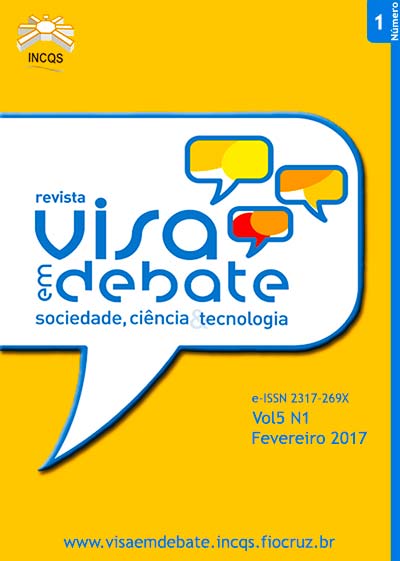Partnerships for productive development: the establishment of socio-technical networks in the Economic-Industrial Complex of Health
DOI:
https://doi.org/10.22239/2317-269X.00807Keywords:
Public-Private Sector Partnerships, Technology Transfer, Health, Social NetworkingAbstract
Partnerships for Productive Development (PDP) are an instrument of the Brazilian state for the development of the Industrial Economic Health Complex and for accomplishing the constitutional prerogative of health as a fundamental right. These partnerships involve cooperation between public and private laboratories for the development, transfer and absorption of technology, production, productive and technological capacity of the country in strategic products to meet the demands of the “Sistema Único de Saúde”, using for this, the purchasing power of the Ministry of Health. From a documentary research, the actors involved in these processes and their interactions were identified; and the socio-technical networks formed from the drug PDP were built graphically by Gephi software. It was found that the efficient management of PDP partnerships depends primarily on the effective articulation of several actors from different ministries, Anvisa, development agencies and public and private entities, being important that each actor also recognizes itself as a fundamental part of the process to improve the results obtained.Downloads
Downloads
Published
Issue
Section
License
Copyright (c) 2017 Health Surveillance under Debate: Society, Science & Technology (Vigilância Sanitária em Debate: Sociedade, Ciência & Tecnología) – “Visa em Debate”

This work is licensed under a Creative Commons Attribution-NonCommercial-NoDerivatives 4.0 International License.
COPYRIGHT ALLOWANCE The author (s) hereinafter designated as the ASSIGNOR hereby assign and transfer, free of charge, the ownership of the copyrights related to this ARTICLE to the Vigilância Sanitária em Debate: Sociedade, Ciência & Tecnologia (Health Surveillance under Debate: Society, Science & Technology) – Visa em Debate, represented by FUNDAÇÃO OSWALDO CRUZ, established at Av. Brasil, nº 4365, Manguinhos, Rio de Janeiro, RJ, Brazil, CEP 21045-900, under the conditions set out below: (a) The terms and conditions set forth in this Agreement shall apply to the following: 1. The ASSIGNOR declares that they s(he) is (are) the author (s) and owner (s) of the copyrighted property of the ARTICLE submitted. 2. The ASSIGNOR declares that the ARTICLE does not infringe the copyrights and / or other property rights of third parties, that the disclosure of images (if any) has been authorized and that they s(he) assume(s) full moral and / or property liability for its content, before third parties. 3. THE ASSIGNOR assigns and transfers all copyrights relating to the ARTICLE to the ASSIGNEE, especially the rights of editing, publication, translation into another language and reproduction by any process or technique. The ASSIGNEE becomes the exclusive owner of the rights related to the ARTICLE, and any reproduction, totally or partially, is prohibited in any other means of publicity, printed or electronic, without prior written authorization from the ASSIGNEE. 4. The assignment is free and, therefore, there will be no remuneration for the use of the ARTICLE by the ASSIGNEE.






